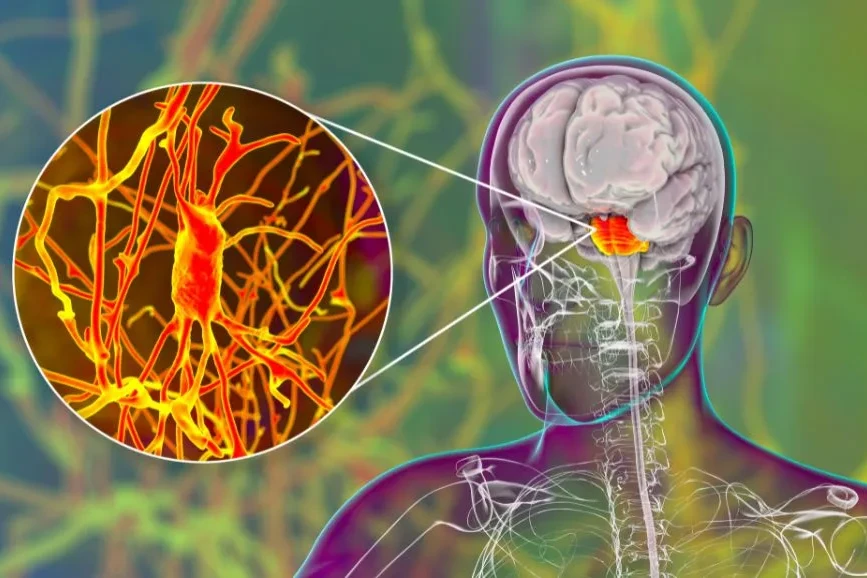What if one diagnosis could change the course of a child’s life forever? That’s the case for families hearing the words “Friedreich’s ataxia.”
This rare genetic condition doesn’t just affect balance and coordination. It slowly damages the nerves, heart, and muscles. And the one question that keeps most families up at night is: What is Friedreich’s ataxia life expectancy?
In this blog, we will explore in simple terms what this condition means for life span, how symptoms affect daily life, and how new treatments are bringing hope. We will also look at real stories, proven facts, and expert advice to give a complete picture of Friedreich’s ataxia life expectancy.
Table of Contents
ToggleWhat Is Friedreich’s Ataxia?
Friedreich’s ataxia is a rare inherited disease that affects the nerves and muscles. It usually begins in childhood or teenage years. Over time, it affects walking, speech, and heart function.
The damage is not only in movement. It spreads to vital organs like the heart, which is a major reason why Friedreich’s ataxia life expectancy is affected.
How does Friedreich’s Ataxia affect the body?
The disease damages the spinal cord, brain, and peripheral nerves. These carry signals that control movement, speech, and balance.
- People start to lose coordination (ataxia), making walking and daily tasks harder.
- Speech becomes slurred. Hands may shake.
- Muscles weaken over time, leading to wheelchair use.
- The heart is often affected, leading to heart problems Friedreich’s ataxia is known for.
- Diabetes and scoliosis are also common.
As this damage builds, it affects quality of life and how long a person might live.
What role do genetics and mitochondrial dysfunction play in Friedreich’s Ataxia?
Friedreich’s ataxia is caused by mutations in the FXN gene. This leads to less frataxin protein, which cells need to make energy.
- Low frataxin levels hurt the mitochondria, which power our cells.
- Without energy, nerves and heart tissue begin to break down.
- This leads to neuromuscular degeneration, poor muscle control, and serious health risks.
The faulty gene is passed down by both parents. Each must be a carrier for a child to be affected.
When do symptoms usually start, and how do they progress over time?
According to the Friedreich’s Ataxia Research Alliance (FARA):
- Symptoms often begin between ages 5 and 15.
- Some adults may get diagnosed later (late-onset FA).
- First signs include trouble walking, poor balance, or frequent falls.
Over time:
- Most patients need a wheelchair by age 25.
- Heart disease and diabetes develop in teens or early 20s.
- Speech, hearing, and vision can also be affected.
This ongoing damage is what shortens life expectancy.
Read: Friedreich’s Ataxia Symptoms – Know the Signs
How is Friedreich’s Ataxia Diagnosed?
Diagnosing Friedreich’s ataxia involves a combination of clinical symptoms, genetic testing, and neurological examinations. Common symptoms of Friedreich’s ataxia include progressive ataxia, muscle weakness, loss of sensation, and impaired speech.
Here is a step-by-step overview of the diagnosis process for Friedreich’s ataxia:
- Consultation with a healthcare professional specializing in neurology or genetics.
- Evaluation of symptoms, medical history, and family history.
- Physical examination to assess motor skills, coordination, and reflexes.
- Genetic testing to detect GAA trinucleotide expansions in the frataxin gene.
- Neurological examinations, including imaging tests such as magnetic resonance imaging (MRI), to evaluate nervous system involvement.
- Confirmation of diagnosis and discussion of treatment options with the healthcare provider.
By following this diagnostic algorithm, healthcare professionals can accurately identify Friedreich’s ataxia and initiate appropriate management strategies to improve the quality of life for individuals with the condition.
| Diagnostic Methods | Advantages | Limitations |
|---|---|---|
| Genetic testing | – Provides definitive confirmation of the diagnosis – Identifies carriers and determines the risk for future generations – Can be performed at any age | – May not detect rare mutations – Costly and not readily available in all healthcare settings |
| Neurological examinations | – Assesses the extent and progression of neurological impairments – Guides treatment planning and management | – Results may vary depending on individual interpretation – Requires specialized expertise |
| Physical examination | – Evaluates motor function, coordination, and reflexes – Provides a comprehensive overview of the individual’s physical capabilities | – Relies on subjective assessments – Does not provide genetic confirmation |
What is the Average Life Expectancy in Friedreich’s Ataxia?
Now let’s tackle the question many are scared to ask: What is the average Friedreich’s ataxia life expectancy?
What do recent studies say about average lifespan in FA patients?
According to research published in Neurology and Brain journals:
- The median Friedreich’s ataxia life expectancy is 35 to 40 years.
- Some live longer, into their 50s or even 60s, especially with heart monitoring and modern care.
While this number might sound scary, it’s not a fixed sentence. New treatments are helping change outcomes.
Does life expectancy vary by age of onset or severity of symptoms?
Yes. The earlier the symptoms appear, the faster the disease usually progresses.
- Early-onset ataxia (before age 10) often means faster nerve damage and shorter life span.
- Milder symptoms or adult-onset types usually mean longer survival.
This is why age at diagnosis plays a big role in Friedreich’s ataxia life expectancy.
How has medical progress changed life expectancy over the decades?
In the 1970s, people rarely lived beyond 30. Today, we’re seeing patients living well into their 50s.
- Improved heart screening helps detect problems early.
- Physical therapy slows muscle loss.
- Cardiac drugs and gene therapies are showing promise.
This shift proves that early diagnosis and treatment can stretch the limits of genetic disorder life span.
Prognosis of Friedreich’s Ataxia
The prognosis of Friedreich’s ataxia can vary depending on the age of onset, severity of symptoms, and presence of complications. A study from the early 1980s reported the mean age of death in patients with Friedreich’s ataxia to be 37.5 years. Another study found a median age of death of 34.5 years and a median estimated survival from disease onset of 36 years. More recent studies have reported a mean age of death of 36.5 years and a majority of deaths occurring between the ages of 16 and 45 years.
However, advancements in medical care and interventions have improved the life expectancy of patients with Friedreich’s ataxia in recent years.
Medical advancements and interventions have offered hope for individuals with Friedreich’s ataxia, increasing their life expectancy and improving quality of life. It is essential for patients with FA to receive early diagnosis, appropriate medical care, and access to supportive therapies to enhance their prognosis.
| Study | Mean Age of Death | Median Age of Death | Median Estimated Survival from Disease Onset |
|---|---|---|---|
| Early 1980s Study | 37.5 years | – | – |
| Recent Studies | 36.5 years | 34.5 years | 36 years |
While the prognosis of Friedreich’s ataxia still presents challenges, ongoing research and advancements in medical management offer hope for improved outcomes and extended survival rates for individuals with the condition.

Neurological Pathology of Friedreich’s Ataxia
Friedreich’s ataxia, a progressive neurodegenerative disorder, primarily affects the central and peripheral nervous systems. The disease leads to degeneration and loss of neurons in various regions, including:
- The dorsal columns
- The corticospinal tracts
- The dentate nucleus
- The spinal ganglia
This degeneration results in significant neurological impairments and manifests as ataxic symptoms. The loss of myelinated fibers in the spinal cord and sensory ganglia leads to sensory ataxia and the loss of tendon reflexes. Particularly, the dentate nucleus exhibits severe neuronal loss and modification of corticonuclear terminals.
The neurological pathology of Friedreich’s ataxia plays a crucial role in the progression and expression of symptoms associated with the condition.

| Region | Neuronal Loss |
|---|---|
| Dorsal columns | Degeneration and loss of neurons |
| Corticospinal tracts | Degeneration and loss of neurons |
| Dentate nucleus | Severe neuronal loss and modification of corticonuclear terminals |
| Spinal ganglia | Degeneration and loss of neurons |
What Are the Main Factors That Influence Life Expectancy in Friedreich’s Ataxia?
Not every case of Friedreich’s ataxia is the same. Several health complications directly affect Friedreich’s ataxia life expectancy.
How does cardiomyopathy affect survival rates in FA?
Cardiomyopathy is the leading cause of death in FA.
- The heart muscle becomes stiff or enlarged.
- It can lead to heart failure or sudden death.
- Studies show 60% to 80% of FA patients develop some form of heart disease.
What is the link between diabetes and reduced life span in FA patients?
About 20% of FA patients develop diabetes, which can speed up nerve damage.
- Diabetes stresses the heart, adds fatigue, and increases complications.
- Blood sugar control can reduce risks.
Do infections and respiratory complications shorten life expectancy?
Yes. As muscles weaken, breathing becomes harder.
- Pneumonia and infections are more likely.
- Respiratory failure is a known risk in advanced FA.
Here’s a quick look at how different complications affect life span:
| Complication | Impact on Life Expectancy | Notes |
|---|---|---|
| Cardiomyopathy | High | Leading cause of death |
| Diabetes | Moderate | Common in ~20% of cases |
| Scoliosis | Low | Indirect impact only |
| Arrhythmias | High | Sudden cardiac death risk |
What Are the Current Treatments Available and Do They Improve Life Span in FA?
There is no full cure yet. But treatments are giving families more time and better quality of life.
Are there FDA-approved drugs for Friedreich’s Ataxia?
Yes. The first and only FDA-approved drug is Omaveloxolone (Skyclarys).
- Approved in 2023, it slows down the disease.
- It helps with movement, speech, and daily living.
- It may stretch Friedreich’s ataxia life expectancy over time.
How do physical therapy and cardiac care affect quality of life?
Supportive care helps patients stay active longer.
- Physical therapy improves strength and posture.
- Cardiac drugs control heart rate and blood pressure.
- Diet, exercise, and rehab add to life quality.
Are gene therapies and clinical trials showing hope for increased longevity?
Yes. Ongoing research is promising.
- Gene therapy by FARA and Reata Pharmaceuticals is testing ways to raise frataxin.
- Antioxidant therapy (like idebenone) also shows benefits.
- These options may soon change rare disease survival rates.
Read: Exploring Friedreich’s Ataxia Treatment Options
Conclusion
Friedreich’s ataxia is a progressive degenerative condition that affects the central and peripheral nervous systems, leading to various symptoms and complications. Individuals with FA often face a shorter life expectancy compared to the general population, primarily due to cardiac dysfunction, the most common cause of death in FA patients. However, there is hope on the horizon.
Advancements in medical care and treatments for Friedreich’s ataxia have shown promise in recent years, resulting in improvements in life expectancy and survival rates. These advancements include targeted therapies, such as gene therapy and frataxin replacement therapy, along with pharmacological approaches to enhance mitochondrial function and reduce oxidative stress.
To continue fostering progress in managing Friedreich’s ataxia, it is crucial to raise awareness, support ongoing research efforts, and provide comprehensive care to enhance the quality of life for individuals living with FA, not only in India but also worldwide. The pursuit of further research and development of innovative therapies holds the potential to transform the prognosis and outcomes for those affected by Friedreich’s ataxia.
By coming together as a global community, we can make a difference in the lives of individuals with Friedreich’s ataxia and pave the way for a brighter future. Let us stand together, supporting and advocating for those living with FA, as we strive for a world where this debilitating condition no longer limits their potential.
FAQ
What is Friedreich’s ataxia?
Friedreich’s ataxia is a progressive degenerative condition that affects the central and peripheral nervous systems, leading to various symptoms and complications.
What is the life expectancy for individuals with Friedreich’s ataxia?
The life expectancy of individuals with Friedreich’s ataxia is generally shorter than that of the general population, with cardiac dysfunction being the most common cause of death.
Are there any advancements in medical care and treatments for Friedreich’s ataxia?
Yes, advancements in medical care and treatments are offering hope for those diagnosed with Friedreich’s ataxia, with improvements in life expectancy and survival rates observed in recent years.
How is Friedreich’s ataxia diagnosed?
Friedreich’s ataxia is diagnosed through a combination of clinical symptoms, genetic testing, and neurological examinations.
What are the complications associated with Friedreich’s ataxia?
Friedreich’s ataxia can lead to various complications, including cardiomyopathy, diabetes mellitus, scoliosis, foot deformities, and retained tendon reflexes.
What factors can affect the life expectancy and survival rates of individuals with Friedreich’s ataxia?
Factors such as age of disease onset, severity of symptoms, presence of complications, and access to medical care and interventions can influence the life expectancy and survival rates of individuals with Friedreich’s ataxia.
What are the genetic factors associated with Friedreich’s ataxia?
Friedreich’s ataxia is an autosomal recessive disease caused by mutations in the frataxin gene, which leads to reduced production of frataxin and mitochondrial dysfunction.
What is the role of neurological pathology in Friedreich’s ataxia?
Neurological pathology plays a key role in the manifestation of ataxic symptoms in Friedreich’s ataxia, leading to degeneration and loss of neurons in various regions of the nervous system.
What promising advances are being made in the management and treatment of Friedreich’s ataxia?
Current research is exploring potential treatments such as gene therapy, frataxin replacement therapy, and pharmacological approaches to enhance mitochondrial function and reduce oxidative stress in individuals with Friedreich’s ataxia.
About The Author

This article is medically reviewed by Dr. Chandril Chugh, Board-Certified Neurologist, providing expert insights and reliable health information.
Dr. Chandril Chugh is a U.S.-trained neurologist with over a decade of experience. Known for his compassionate care, he specializes in treating neurological conditions such as migraines, epilepsy, and Parkinson’s disease. Dr. Chugh is highly regarded for his patient-centered approach and dedication to providing personalized care.
→ Book a consultation to discover which remedies suit your needs best.




